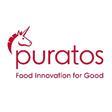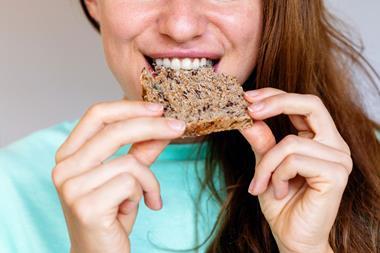In the hunt to cut costs, bakers risk losing sales if they compromise eating characteristics or misjudge consumer priorities. How can they strike the perfect balance?

Rising costs are on the mind of every British baker at the moment – at work just as much as at home. So, while having a good grasp of your financials is always essential to business success, 2022 is surely the year when everyone is scrutinising their books and looking for ways to protect their customer base, profit margins and long-term viability.
Adapting to a changing shopping landscape

With so many factors out of bakers’ control – including business rates, energy prices, ingredients and more – of course it’s prudent to look for opportunities to save money that could help relieve the pressure. This is particularly important if sales are already being impacted, which new consumer research commissioned by Puratos1 suggests is the case. Three in four (74%) Britons are more worried about rising prices, and are adapting their shopping habits as a result. Almost one-third is cutting back spend on cakes, patisserie and other sweet goods, and even more (45%) are considering purchasing speciality breads less often.
So, for bakers, managing the cost of every individual loaf, bun, cake or pastry is now business-critical.
Changing… without change
However, a laser focus on cost – at the expense of all other factors – would be a foolhardy approach. With fewer occasions to “treat” themselves, consumers will not tolerate any decline in taste or quality that would compound their disappointment. Our recent research found that although cost saving is increasingly a priority, quality is still king, with nearly half (47%) of consumers forgoing the cheapest bread for quality that they trust.
Similarly, their overall health and well-being goals are non-negotiable in a post-pandemic society, so it would be unwise to change to ingredients or methods that may impact calories and nutritional content.
Can this be done? Can bakers really make meaningful cost savings without damaging the characteristics of their offering that make it so appealing in the first place?

Advanced innovations are helping resolve this dilemma. Ingredients derived from animal origins are some of the most expensive in a baking recipe. In fact, fat typically accounts for 25-30% of cake batter costs, and egg another 30-35%. So plant-based substitutes for butter, egg and similar ingredients can make a significant difference to the bottom line. For instance, ACTI Egg enables a reduction of up to 15% of egg use and ACTI Fat up to 30% less fat. A similar approach is possible in bread and laminated pastries too, where INTENS Puraslim can cut fat use by up to 50% and MIMETIC, a plant-based speciality fat, can replace butter entirely. Egg costs can be lowered through the use of ACTI Egg in the dough or removed completely from the glazing process by swapping an egg glaze for SUNSET Glaze (which is also more efficient than egg).
Although every application is different, such changes can unleash cost savings of up to 12%, dependent on the baker’s recipe and other factors. This can translate, of course, into large annual savings up to five-figure amounts in some cases. Critically, though, these ingredients have been designed to offer the same visual and eating properties as their animal-derived counterparts.
Protecting what matters
It is evident that plant-based ingredients can provide the cost savings that are highly desirable right now, but they tick other boxes too. Conscious consumerism and holistic health are macro-trends clearly highlighted by Puratos’ Taste Tomorrow research and numerous other studies – and they influence every type of consumer, from value seekers to those concerned about their wellness and the environmental impact of food. But no matter what the motivation, plant-based substitutes for animal-derived ingredients respond precisely to these changing consumer habits. With all major analysts predicting a continued upward trajectory in many of these, what might begin as a cost-cutting exercise may well become a profitable long-term strategy.
To find out more about Puratos’ ingredients and how they can help your business save costs without compromising quality, click here.
Source
1 Puratos consumer barometer, April 2022 - 3,004 consumers surveyed




































